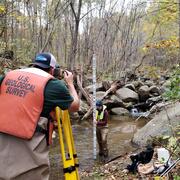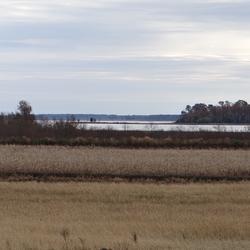Land-Use Monitoring and Forecasting
New high-resolution, land-use and change data improves decision-making in the Chesapeake Bay watershed
Efforts are underway to protect the rich array of lands and habitat across the Bay watershed for fish, wildlife, and people. However, new high-resolution data show an alarming loss of forests and other vital lands because of development. The USGS is leading analyses of the enhanced land-change data, and forecasting scenarios of future use, to inform land-protection and local-planning decisions.













